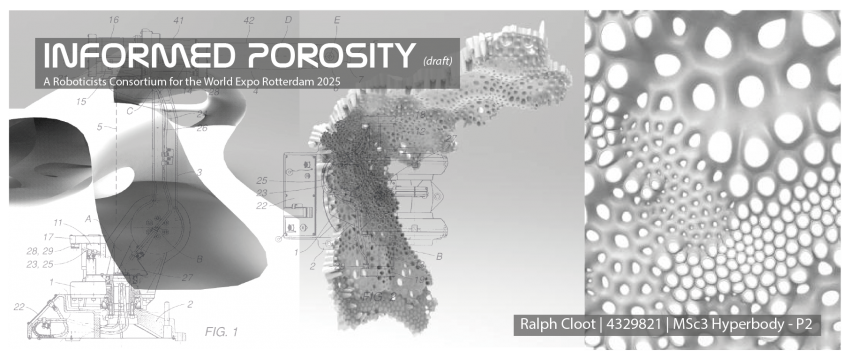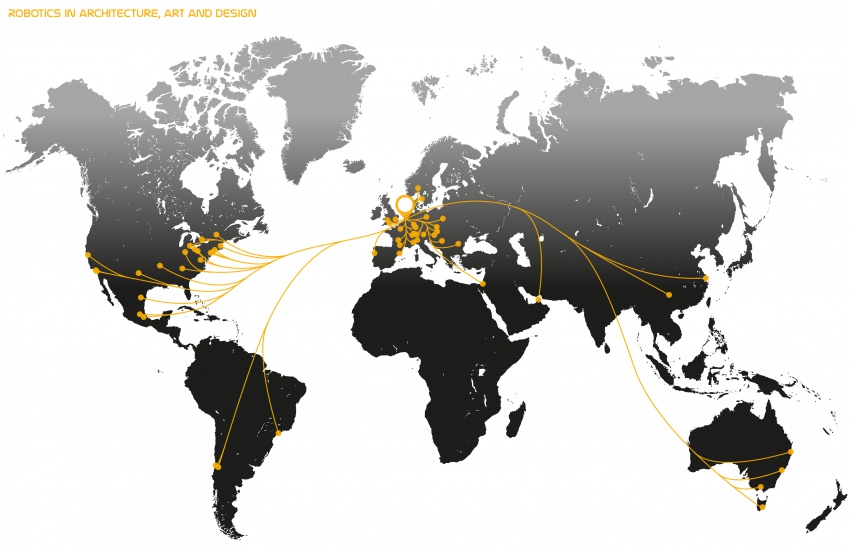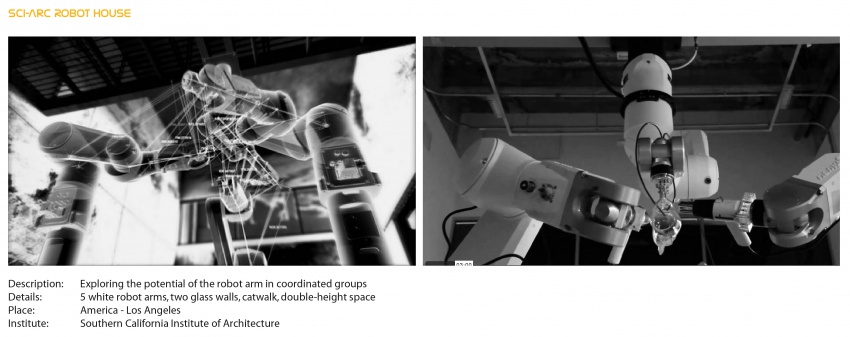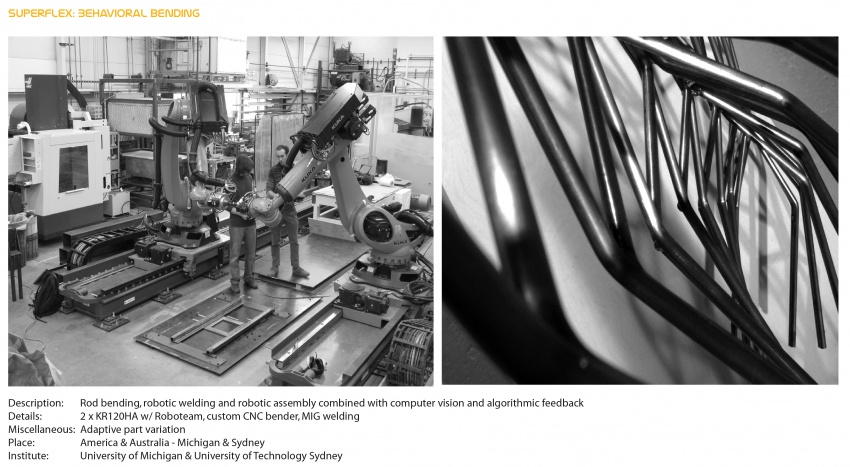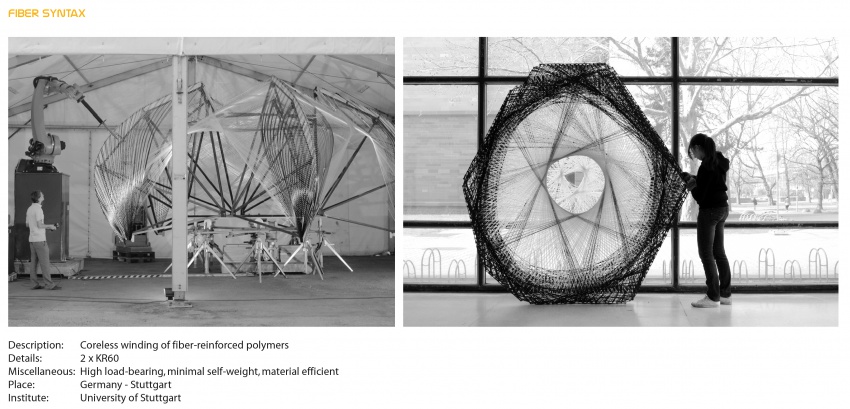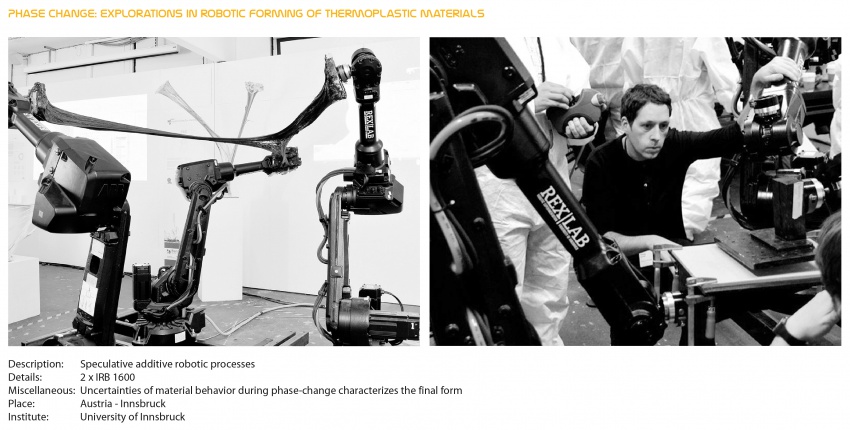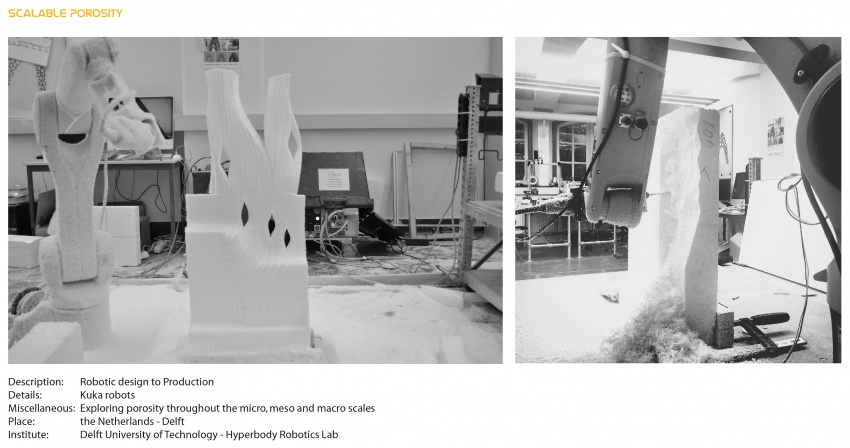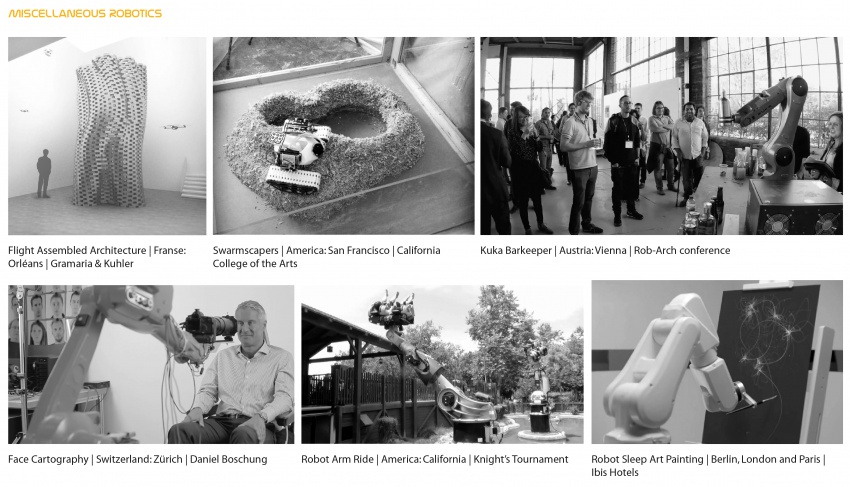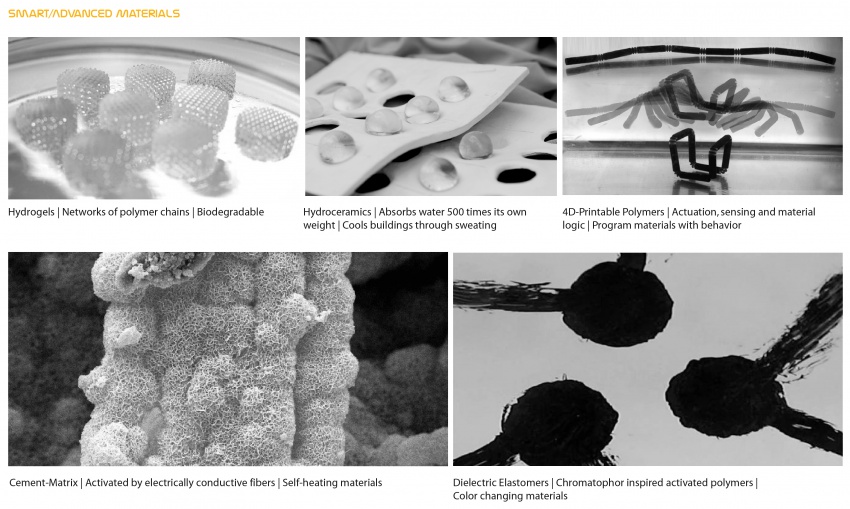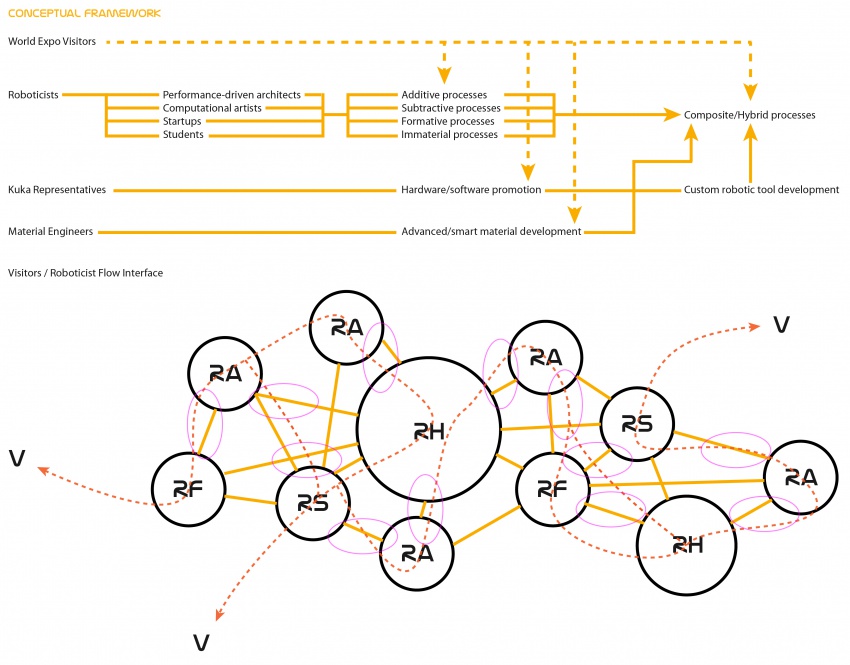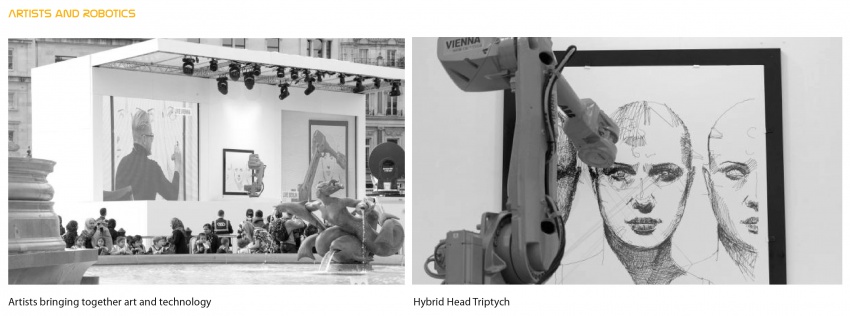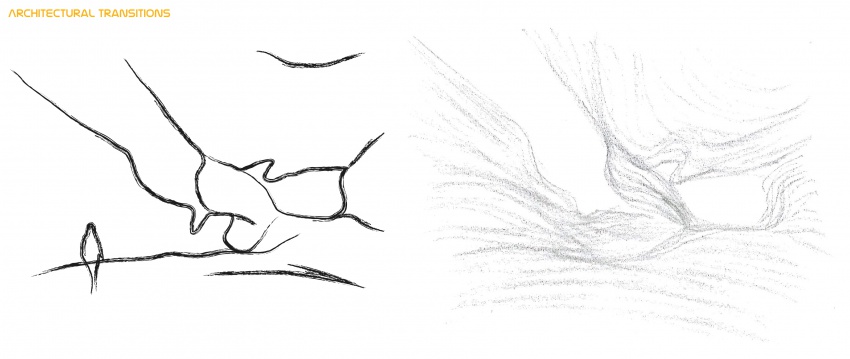Difference between revisions of "project11:Frontpage"
| Line 6: | Line 6: | ||
'''The Roboticist Consortium''' | '''The Roboticist Consortium''' | ||
| − | '' | + | ''This project attempts to offer the upcoming World Exposition 2025, to be hosted in Rotterdam, a 7000m2 pavilion that functions as a consortium for roboticists who will be exploring what the fourth industrial revolution could mean for the profession of architecture. This includes, but is not limited to, human/robotic collaboration, hybrid robotic fabrication processes, agent awareness to boundary conditions, real-time multi-agent repositioning in three dimensions, collision avoidance and heterogeneous material distribution. On the other hand, the visitors of the World Expo will experience first hand how these roboticists do their research and conduct their state-of-the-art experiments, interacting to a certain extend with several robotic installations and simulations within the pavilion. For these reasons the project will not only include functions connected to various robotic workstations, laboratories, installations and workshops but will also include facilities specifically for the visitors and the interfaces between roboticist and visitor people flows. Eventually, after the World Expo is finished, the pavilion should remain functional as a research and learning center where industry and academy interact with and benefit from each other. |
'' | '' | ||
Revision as of 16:28, 19 January 2016
The Roboticist Consortium
This project attempts to offer the upcoming World Exposition 2025, to be hosted in Rotterdam, a 7000m2 pavilion that functions as a consortium for roboticists who will be exploring what the fourth industrial revolution could mean for the profession of architecture. This includes, but is not limited to, human/robotic collaboration, hybrid robotic fabrication processes, agent awareness to boundary conditions, real-time multi-agent repositioning in three dimensions, collision avoidance and heterogeneous material distribution. On the other hand, the visitors of the World Expo will experience first hand how these roboticists do their research and conduct their state-of-the-art experiments, interacting to a certain extend with several robotic installations and simulations within the pavilion. For these reasons the project will not only include functions connected to various robotic workstations, laboratories, installations and workshops but will also include facilities specifically for the visitors and the interfaces between roboticist and visitor people flows. Eventually, after the World Expo is finished, the pavilion should remain functional as a research and learning center where industry and academy interact with and benefit from each other.
Ralph Cloot
In order to push development to the next level, smart/advanced materials will be researched and developed alongside the development of new or improved robotic fabrication processes, following principles of ecology and biology, achieving more sustainable awareness in the process. As both fields or being explored, each will be able to inform the other as the roboticists progress in their efforts during (and after) the Rotterdam World Exposition 2025. Developing custom robotic tools, (see the Robotic Extrusion example) will be a task that will gradually be explored as well as the research progresses, opening up the world of robotics and discovering new possibilities.
The Rotterdam World Exposition 2025 will have an estimated 50.000.000 expected visitors. In past experiences with World Expos, visitor flow stagnation, queues and bottlenecks have always proves to be a recurring issue. If the pavilion(s), and therefore the World Expo as a whole, is to be successful, then how to deal with the stagnation of these visitor flows is going to play a key role in the computational strategy for the pavilion (and its direct surroundings), with an emphasis on the interaction with the internal Roboticists flows and how this effects the spaces themselves and the overall experience of the pavilion.
The Robotics Consortium will host an array of Robotic workshops and research labs, dissipating into separate working cells and converging into a so called ground zero where composite/hybrid robotic fabrication processes will be developed through the combined effort of multiple specialists. Visitors of the World Expo will simultaneously learn and to a certain extend interact within the exhibition areas. How the roboticists and visitors interact with each other, allowing for gradients of public and private spaces, is determined by how the pavilion deals with its transitions between these spaces ranging from fully open to fully enclosed. The actual materialisation of the pavilion itself will be a demonstration of the current robotic capabilities within the field of architecture in order to realise these transitions and to control the movement flows of both the roboticists and visitors. Artists using robotic and computational skills will be involved as well, having a more direct interaction with the World Expo visitors and developing tools and techniques from a different perspective/motivation that might prove useful for the overall goal of the pavilion.
